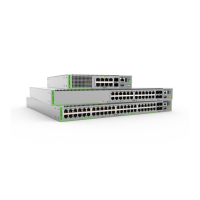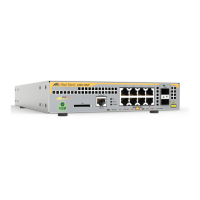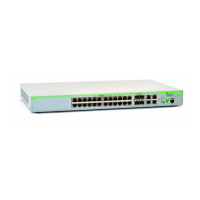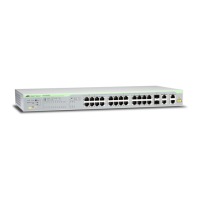Chapter 1: Overview
34
Note
Switch ports default to half-duplex mode when connected to
10 Mbps or 100 Mbps network devices that do not support Auto-
Negotiation. If a network device supports full-duplex only, a duplex
mode mismatch can occur, resulting in poor network performance.
To prevent this, disable Auto-Negotiation and set the duplex mode
manually on ports connected to 10Mbps or 100Mbps devices that
support full-duplex only.
Wiring
Configuration
The wiring configuration of a port operating at 10Mbps or 100Mbps can be
MDI or MDI-X. The wiring configurations of a switch port and a network
device connected with straight-through twisted pair cabling must be
opposite, such that one device is using MDI and the other MDI-X. For
example, a switch port must be set to MDI-X if it is connected to a network
device set to MDI.
The wiring configurations of the ports can be set manually or automatically
by the switch with auto-MDI/MDI-X (IEEE 802.3ab-compliant). This feature
enables the switch to automatically negotiate with network devices to
establish their proper settings.
The MDI and MDI-X settings do not apply when ports are operating at a
speed of 1Gbps or higher.
Cable
Requirements
The minimum twisted pair cable requirements are as follows:
10/100Mbps ports: Standard TIA/EIA 568-B-compliant Category 3
unshielded cabling.
1/2.5/5Gbps ports: Standard TIA/EIA 568-A-compliant Category 5
or TIA/EIA 568-B-compliant Enhanced Category 5 (Cat 5e)
unshielded cabling.
10Gbps ports: Standard TIA/EIA 568-C-compliant Category 6a
unshielded cabling.
Port Pinouts Refer to Table 54 on page 252 for the port pinouts of the 100Mbps and
1/2.5/5Gbps twisted pair ports.

